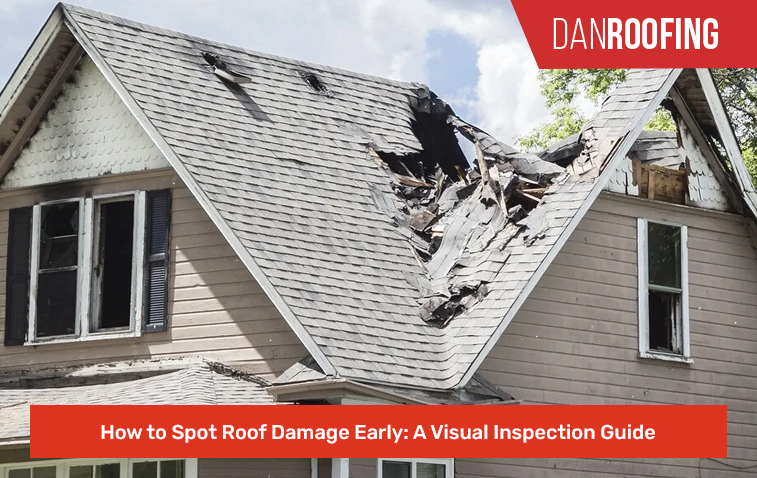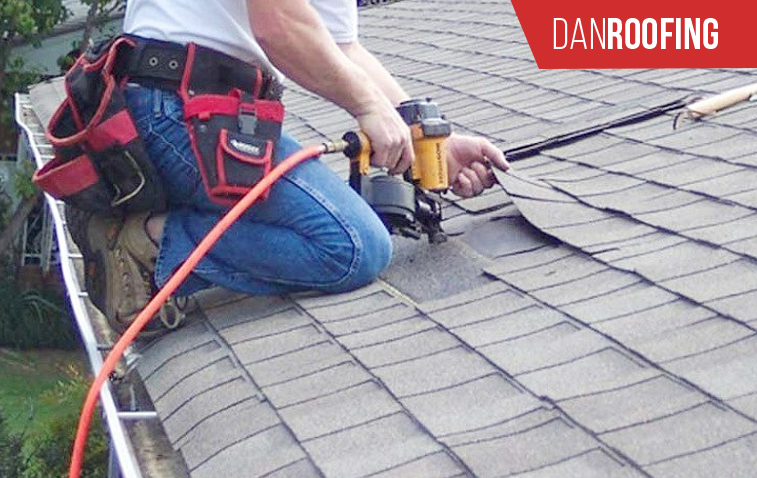Roofs are very important parts of our houses. Sometimes, roofs get hurt by strong winds, heavy rain, or falling branches. If we find the damage early, we can fix it easily and save a lot of money. By checking our roofs regularly, we can prevent leaks and other costly repairs. This helps us take good care of our homes and families. It is important to be careful when looking at your roof. It is always best to ask a grown-up for help if you need to climb a ladder.

First, we can check our roof without climbing on it. We can walk around our house and look up at the roof. We should look for missing shingles. Shingles are the flat pieces that cover the roof. If some are missing, it’s a sign of damage. Also, we should look for shingles that are curled or cracked. These are also signs that the roof needs help. Furthermore, we can use binoculars to get a closer look. This helps us see small details from the ground.
Next, we should look at the roof’s edges. The edges are called eaves. We should check if the eaves are straight. If they are wavy or sagging, it could mean there is a problem with the roof’s structure. Additionally, we should look for dark spots or stains on the roof. These can mean water is getting in. Similarly, we should check for moss or algae growing on the roof. This can trap moisture and cause damage.
Finally, we should look at the gutters. Gutters are the troughs that catch rainwater. We should check if they are clean and free of leaves and debris. Clogged gutters can cause water to back up onto the roof. Moreover, we should check if the gutters are securely attached to the house. Loose gutters can also cause problems. Therefore, checking the gutters is an important part of checking the roof.
Shingles protect our roof from the weather. We need to check them carefully. First, we should look for missing shingles. If there are missing shingles, the roof is exposed to the elements. This can lead to leaks. Also, we should look for shingles that are curled or buckled. These shingles are not lying flat and can let water in.
Next, we should look for cracked shingles. Cracks can happen because of age or strong weather. Cracks let water seep through and damage the roof. Furthermore, we should look for shingles that have lost their granules. Granules are the small, colored pieces on the surface of shingles. They protect the shingle from the sun. If many granules are gone, the shingle will wear out faster.
Also, we should pay attention to the color of the shingles. If some shingles look different in color than others, it may indicate that they are newer replacements. This can signal past damage in that area. Therefore, checking the shingles carefully is very important for maintaining a healthy roof.
Flashing is metal material installed around roof features. It keeps water from getting in around chimneys, vents, and skylights. First, we should look for flashing that is bent, broken, or rusted. Damaged flashing can let water into the house. Also, we should check where the flashing meets the roof or other structures. If there are gaps or cracks, water can seep through.
Next, we should check the flashing around chimneys. Chimneys are tall and can be affected by wind and weather. The flashing around them needs to be in good condition. Furthermore, we should check the flashing around vents. Vents let air in and out of the house. The flashing around them keeps water from entering.
Additionally, we should check the flashing around skylights. Skylights are windows in the roof. The flashing around them needs to be secure to prevent leaks. Therefore, examining the flashing is crucial for preventing water damage.
We can also check for roof damage from inside our house. First, we should look for water stains on the ceilings. These stains are often brown or yellow. They are a sign that water is leaking through the roof. Also, we should check for peeling paint or wallpaper. Moisture from leaks can cause paint and wallpaper to peel.
Next, we should check for damp spots on the walls or ceilings. These spots may feel wet or clammy. They are another sign of a roof leak. Furthermore, we should check for musty odors. A musty smell can mean there is mold or mildew growing because of a leak.
Additionally, we should check the attic, if we have one. We should look for water stains on the wood or insulation. We should also look for signs of rot or mold. Therefore, checking inside our house is another important way to spot roof damage early.

Keeping our roof in good condition is important. First, we should clean our gutters regularly. This prevents water from backing up onto the roof. Also, we should trim trees that are close to the roof. Branches can fall on the roof and cause damage.
Next, we should remove moss and algae from the roof. These can trap moisture and damage the shingles. Furthermore, we should have our roof professionally inspected regularly. Professionals can find problems that we might miss.
Additionally, we should fix any small problems right away. This prevents them from becoming big problems. Therefore, regular maintenance is key to a long-lasting roof.
| Task | Frequency | Why it’s Important |
| Clean Gutters | Twice a year | Prevents water backup and roof damage. |
| Trim Trees | As needed | Prevents falling branches from damaging the roof. |
| Remove Moss/Algae | As needed | Prevents moisture damage to shingles. |
| Professional Check | Every few years | Catches problems early. |
Strong winds can blow off shingles or damage flashing. Heavy rain can cause leaks, especially if the roof is already damaged. Falling branches from trees can puncture the roof. Additionally, hail can damage shingles and other roof components. Therefore, weather plays a big role in roof damage.
A roof should be inspected at least twice a year, ideally in the spring and fall. These inspections help identify any damage caused by winter weather or summer storms. Additionally, it’s a good idea to inspect the roof after any severe weather event, such as a hailstorm or strong windstorm. Therefore, regular inspections are important for maintaining a healthy roof.
Small water stains on the ceiling can indicate a minor leak. Peeling paint or wallpaper can also be a sign of moisture intrusion. Additionally, a musty odor in a particular room can suggest a hidden leak. Therefore, even small signs should be investigated.
Proper attic insulation and ventilation can help prevent ice dams. This helps keep the roof’s surface temperature more consistent. Cleaning gutters and downspouts also prevents ice from backing up onto the roof. Furthermore, removing snow from the roof’s edge can also help. Therefore, taking these steps can minimize ice dam formation.
Roof ventilation helps regulate the temperature and moisture levels in the attic. Proper ventilation prevents heat buildup in the summer and moisture buildup in the winter. This prevents damage to the roof structure and shingles. Furthermore, good ventilation can also improve energy efficiency. Therefore, roof ventilation plays a vital role in roof health.
If someone suspects significant roof damage, they should contact a qualified roofing professional immediately. A professional can conduct a thorough inspection and assess the extent of the damage. They can also recommend appropriate repairs or replacements. It’s important not to attempt major repairs without professional help. Therefore, contacting a professional is the best course of action for significant roof damage.